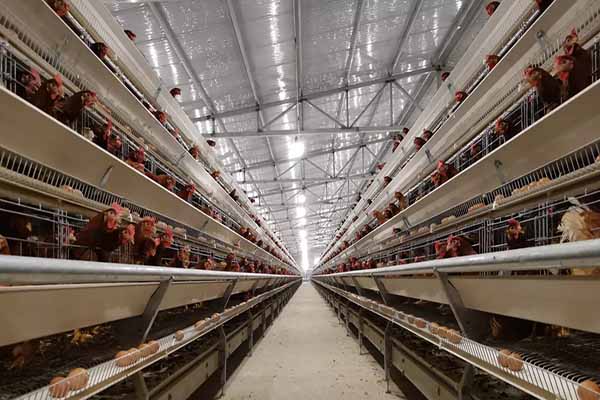Uganda’s 10,000 Chicken Farm Revolutionizes Environmental Control with Automation Solution
Time : 2025-04-24
In the heart of Uganda, a 10,000 chicken farm is making waves in the poultry industry with an innovative environmental control automation solution. This farm, which has become a beacon of modern agriculture, is not just boosting productivity but also setting a new standard for sustainability and efficiency. Let’s dive into how this cutting-edge automation is changing the game for Uganda’s poultry sector.
The Challenge of Environmental Control in Large-Scale Chicken Farming
Maintaining the perfect environment for 10,000 chickens is no small feat. Traditional methods often rely on manual labor and guesswork, leading to inconsistent conditions that can affect the health and productivity of the flock. This farm, however, has embraced technology to take environmental control to a whole new level.
The Automation Solution: A Game Changer
The automation solution implemented on this farm is a marvel of modern technology. It includes a comprehensive system that monitors and adjusts key environmental factors such as temperature, humidity, CO2 levels, and even light intensity. Let’s break down the key components of this system:
Temperature Regulation
One of the most critical factors in chicken farming is temperature control. With the automation solution, the farm can maintain the ideal temperature range for the chickens, ensuring they stay comfortable and healthy. The system uses sensors to detect temperature changes and adjusts heating or cooling systems accordingly, eliminating the need for constant manual adjustments.
Humidity Management
Humidity plays a crucial role in the health of chickens. Too much humidity can lead to respiratory issues, while too little can cause stress and dehydration. The automation system continuously monitors humidity levels and uses dehumidifiers or humidifiers to maintain the perfect balance.
CO2 Levels
Excess CO2 can lead to a decrease in oxygen levels, causing stress and reduced productivity in chickens. The system uses CO2 sensors to ensure the levels remain within the optimal range, improving the overall well-being of the flock.
Light Intensity
Chickens have specific light requirements for optimal growth and egg production. The automation solution allows the farm to control the light intensity and duration, simulating natural light cycles to support the chickens’ natural rhythms.
The Benefits of Environmental Control Automation
Implementing this automation solution has brought numerous benefits to the farm:
Increased Productivity
By providing a consistent and ideal environment, the chickens are healthier and more productive. This results in higher egg yields and better growth rates, significantly boosting the farm’s profitability.
Reduced Labor Costs
Manual monitoring and adjustment of environmental conditions are time-consuming and labor-intensive. With automation, the farm can reduce its reliance on manual labor, leading to cost savings.
Improved Animal Welfare
Maintaining the optimal environment for chickens is essential for their welfare. The automation solution ensures that the chickens are living in comfortable and stress-free conditions, promoting their overall health and well-being.
Sustainability
The system is energy-efficient, reducing the farm’s carbon footprint. It also minimizes the use of chemicals and other resources, contributing to a more sustainable farming practice.
The Future of Chicken Farming in Uganda
The success of this 10,000 chicken farm in Uganda has inspired other farmers to look into automation solutions. The future of chicken farming in the country is bright, with more farms adopting technology to improve environmental control and efficiency.
In Conclusion
The implementation of environmental control automation at this 10,000 chicken farm in Uganda is a testament to the power of technology in agriculture. It’s a solution that not only increases productivity and profitability but also improves animal welfare and sustainability. As more farms in Uganda and beyond embrace similar technologies, the future of poultry farming looks promising.












